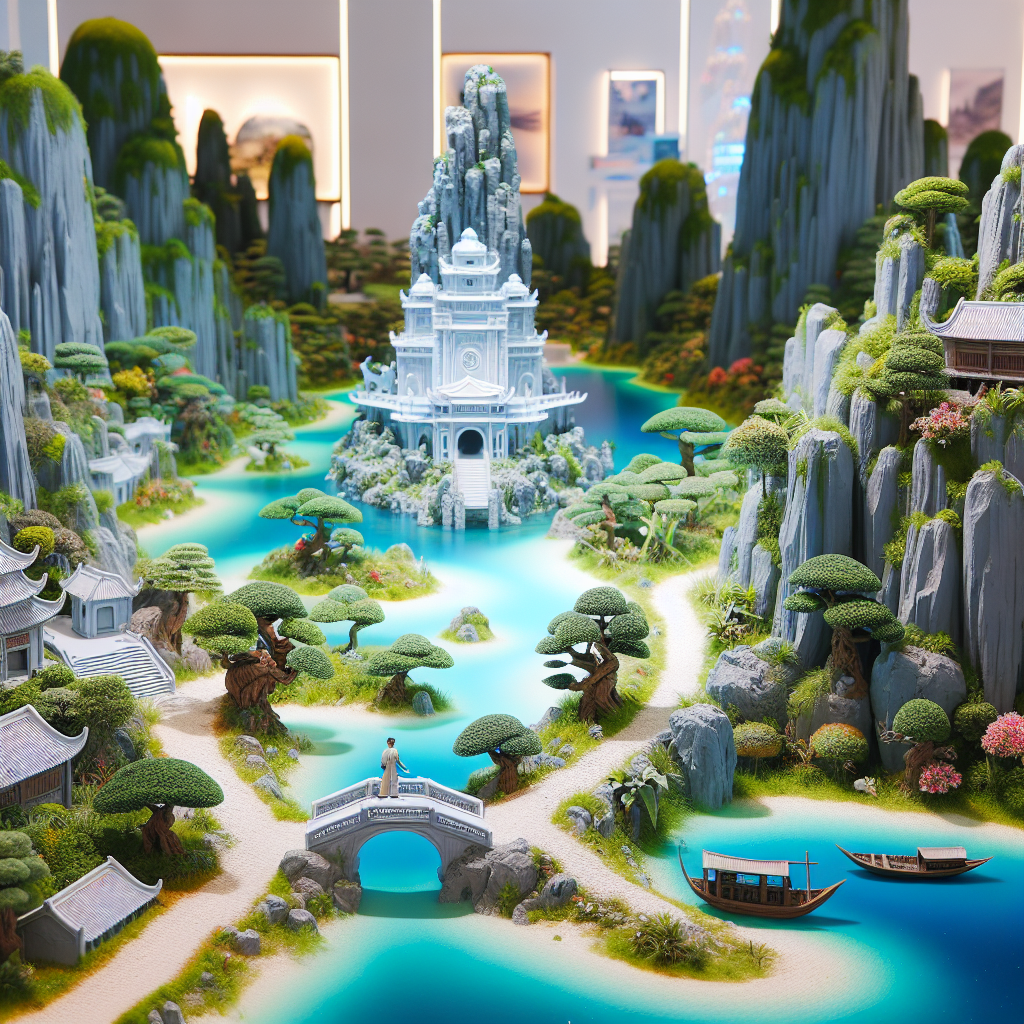Imagine having a miniature mountain range right in the middle of your living room; it sounds pretty extravagant, right? Yet, in Vietnam, people have been doing this for centuries—through Hòn non bộ, a traditional art form that involves creating scaled-down landscapes or miniature mountains for the spiritual and aesthetic pleasure of its audience. Hòn non bộ originated in Vietnam but has artistic threads connecting to Chinese and Japanese gardening cultures. While it's rooted in tradition, this art is finding new expressions among people across the world who are eager to engage with nature in a creative way.
Hòn non bộ often includes elements like water, rock, trees, and sometimes small figurines to create these beautiful landscapes. This isn't just about piling some rocks one on top of the other. It's a whole process that involves balance, harmony, and even elements of Feng Shui, where each part has a deeper meaning. You could consider it Vietnam's answer to a personal landscape architecture, set to be the issue of balance people always talk about while managing urban living and nurturing something green.
Emotional and spiritual well-being are major drivers for this practice. The intricate design and care devoted to each creation bring peace and a sense of connection to the environment. In today’s era where mental health is increasingly becoming a topic of conversation, this ancient practice offers more than just an aesthetic delight. It acts as a mindful activity that promotes relaxation and reduces stress. It's like having your therapist, only made of rocks and moss.
However, adopting this art form outside of Vietnam might bring a different set of challenges and adaptations. While enacting a full-fledged Vietnamese Hòn non bộ might not be feasible due to space constraints or unfamiliarity with the traditional elements, contemporary interpretations have evolved. People are incorporating modern materials like glass or metal in what is often termed “neo-Hòn non bộ.” These adaptations are more compact and fit into the confines of an apartment or small backyard, making them ideal for city dwellers.
In addition, the environmental sustainability of Hòn non bộ is often a point of debate. Critics argue the practice requires significant water and can sometimes involve non-local elements that may affect local biodiversity. Enthusiasts counter with the argument that it is entirely possible to create these landscapes using sustainable practices such as greywater systems and native plant species.
You'll often find Hòn non bộ in the gardens of Vietnam's traditional homes or temples. However, modern iterations have found a way into offices, living rooms, and even public spaces like shopping malls across the world. The widespread usage signifies a merging of tradition with modernity, something that increasingly resonates with Gen Z's love for sustainability and minimalist design.
Acknowledging different opinions, it's essential to state that Hòn non bộ’s cultural value is undeniable. Preserving its traditional aspects while making room for innovation is the way forward. Some might argue that modifying or 'westernizing' Hòn non bộ steals from the authenticity of the art. But there’s an understanding that any cultural practice that wishes to thrive must evolve. In this way, the art of Hòn non bộ exemplifies how cultural artifacts can adapt, allowing for richer global conversations.
There's also an opportunity for collaboration between cultures—asking permission to borrow elements from a tradition while offering something back. The growth of international travel and social media makes these conversations more possible than ever before. People can share their unique Hòn non bộ creations with the click of a button, inspiring others across the globe. The digital age allows us to create a patchwork of culture, input, and innovation from a multitude of sources.
Ultimately, engaging in the recreation of Hòn non bộ—whether traditional or modern—invites a conversation with nature. It asks its caregivers to slow down, to observe the natural world at its most fundamental level, and to preserve a legacy that carries values of balance, mindfulness, and beauty. The next time you see someone’s attempt at what looks like rocks piled together consider that you’re looking at a piece of living art with roots that reach deep into both the earth and history.
Make no mistake; this is more than a hobby. It’s an aesthetic lifeline that nourishes our cramped city souls while connecting us to something profound and ancient. Whether seen as a testament to cultural heritage or as an innovative way to incorporate nature into our lives, Hòn non bộ is one of those art forms that stands the test of time.

